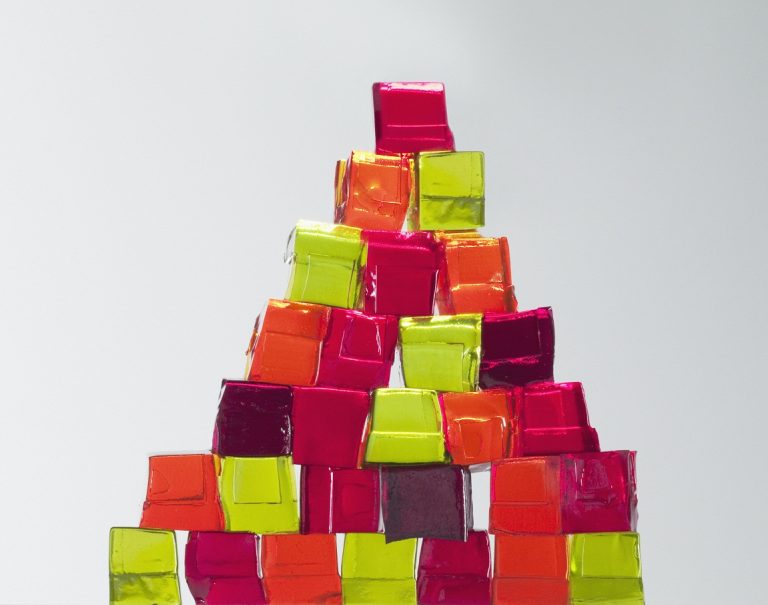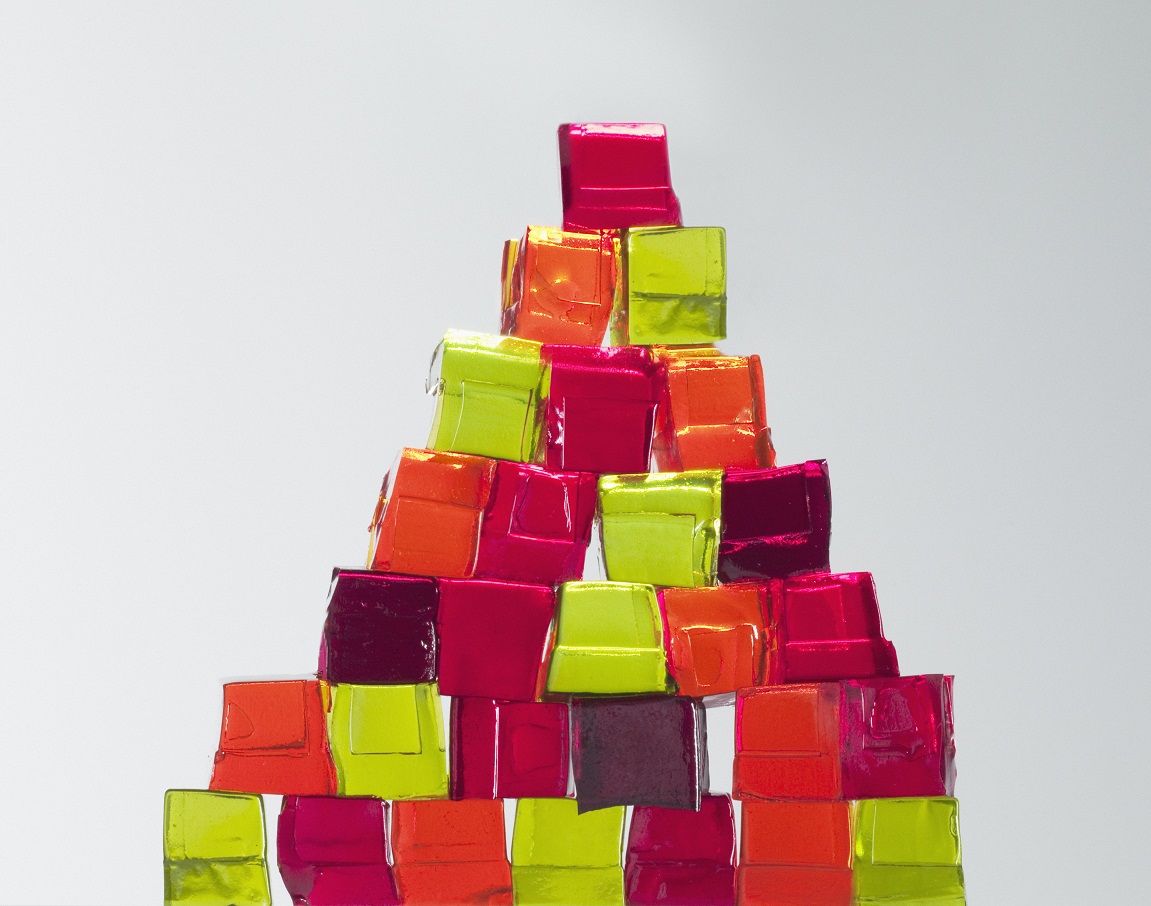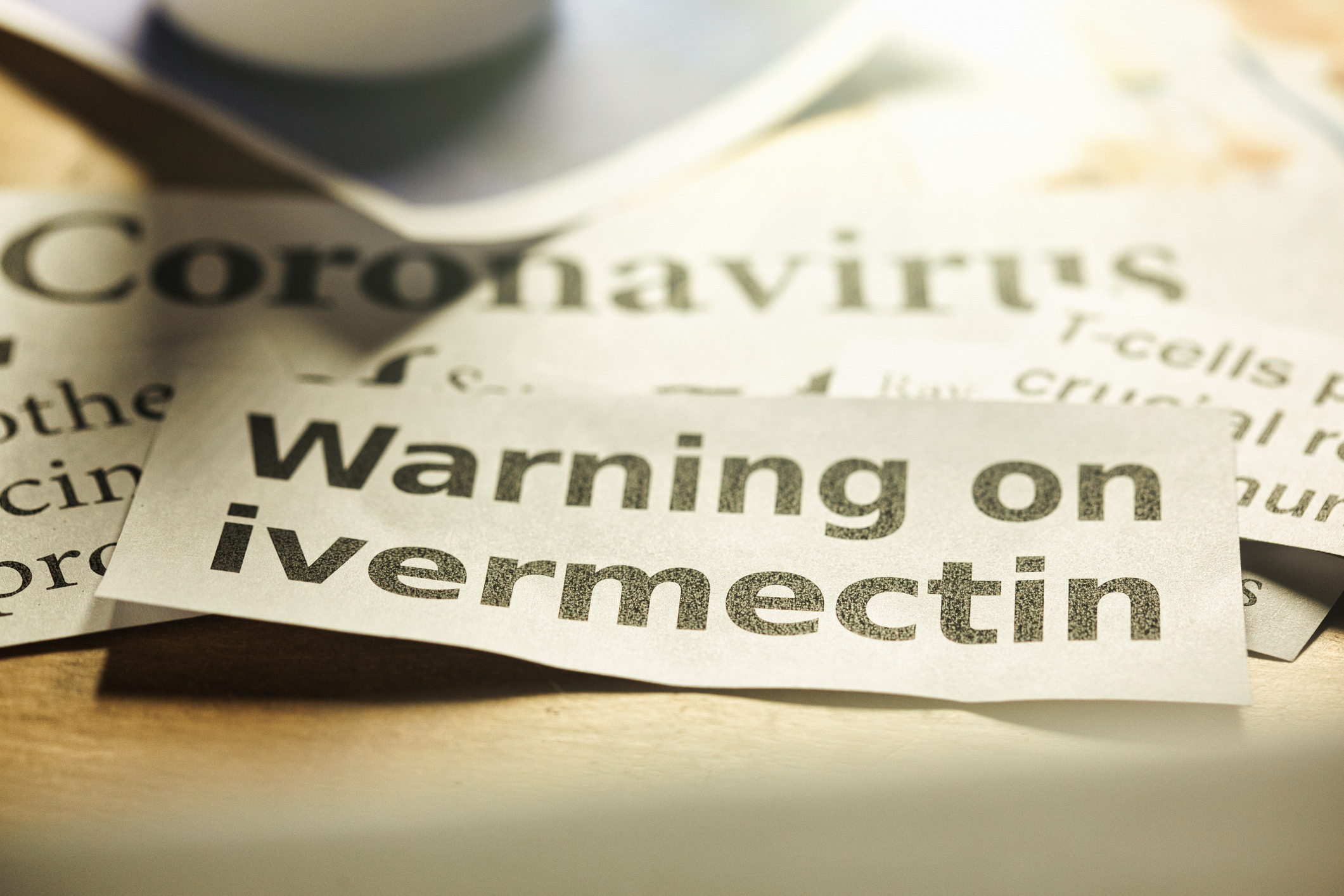- Gelatin is used as a stabilizer in many vaccines licensed and distributed in the U.S.
- Scientific studies conducted in Japan in the early 1990s show that anaphylactic reactions to certain vaccines are associated with a gelatin allergy.
- Vaccine manufacturers removed gelatin from all live virus vaccines in Japan by 2000, yet it continues to be used as an ingredient in vaccines distributed in the U.S.
The substance known as “gelatin” is a protein usually obtained from cows or pigs and produced by the partial hydrolysis of collagen extracted by boiling animal parts such as cartilage, tendons, skin, bones and ligaments in water.1 It acts a stabilizer, thickener and texturizer in food products such as yogurt, cream cheese, ice cream, marshmallows, etc. It is also used in the manufacturing of vitamin and drug capsules and cosmetics and is an ingredient in vaccines.2
Gelatin is Used in 11 Vaccines Licensed in the U.S.
According to the U.S. Centers for Disease Control and Prevention (CDC) vaccine excipient list, the following eleven vaccines contain gelatin3:
- Influenza (FluMist) Quadrivalent
- MMR (MMR- II)
- MMRV (ProQuad) (Frozen)
- MMRV (ProQuad) (Refrigerator Stable)
- Rabies (Imovax)
- Typhoid (Vivotif Ty21a)
- Varicella (Varivax) (Frozen)
- Varicella (Varivax) (Refrigerator Stable)
- Yellow Fever (YF-Vax)
- Zoster (Zostavax) (Frozen)
- Zoster (Zostavax) (Refrigerator Stable)
In the past, the tetanus, diphtheria and pertussis vaccine (Tdap) also contained gelatin; however, current formulations are now manufactured without gelatin.4
Gelatin is used as a stabilizer in vaccines and primarily comes from pigs.5 The role of stabilizers in viral vaccines is to help the vaccine maintain its effectiveness during storage. Stabilizers are necessary in vaccines, particularly where the cold chain is unreliable. Instability of the vaccine, which can be caused by changes in temperature and pH, can lead to the loss of the antigenicity and decreased effectiveness of the attenuated virus present in the vaccine.6 The live virus measles, mumps, and rubella (MMR), Varicella (chickenpox) and Zoster (shingles) vaccines contain the highest doses of gelatin.4 7
Gelatin is the Most Commonly Identified Cause of Allergic Reactions to Vaccines
In the early 1990s, several reports implicating the presence of gelatin in live virus vaccines to the occurrence of anaphylactic allergic reactions came to light, and were reported in the medical literature in Japan.8 The increasing number of Japanese patients with allergic reactions after administration of gelatin-containing vaccines became more widely recognized, including after administration of DTaP vaccine.9
In 1993, there was a single case report in the United States of a documented anaphylactic reaction to the MMR vaccine in a 17-year-old female that occurred in 1991. Tests confirmed that her serum immunoglobulin E (IgE) antibodies to gelatin were elevated which initiated further investigation into gelatin-mediated vaccine reactions.10
Prior to the release of this case report, it was believed that allergic reactions to the MMR vaccine was related to an egg allergy; however, at the time, it was found that only 2 of 28 Japanese patients who reported anaphylactic reactions to the MMR vaccine were allergic to eggs.11
Thereafter, researchers in Japan began investigating whether anaphylactic reactions to the MMR vaccine in some individuals were triggered by a gelatin allergy. Results from several studies suggested that immediate reactions to vaccines containing gelatin were often due to a gelatin allergy.10 One question raised regarding gelatin-related allergic reactions was—how did the patients become sensitized to gelatin to begin with? Allergist and immunologist John Kelso, MD explains:
Clinical allergy to the ingestion of gelatin may or may not be present in patients who have allergic reactions to the systemic injection of gelatin. Reactions to a gelatin-containing vaccine may occur after the first dose of vaccine because of prior exposure to (and sensitization from) gelatin in other medications or vaccines or by ingestion of gelatin-containing foods.10
What this essentially means is that people with a gelatin food allergy may develop an anaphylactic reaction after receiving a gelatin-containing vaccine; however, it has also been reported that people without a prior gelatin allergy can also experience anaphylactic reactions in response to gelatin-containing vaccines. This is believed to be a result of the injection route of vaccine administration (injection versus ingestion).12
Dr. Kelso further adds:
An electronic search of the 1998 Physicians’ Desk Reference revealed 360 different products that contain gelatin. Most of these are gelatin capsules for oral administration; however, I am aware of only a single case in which a gelatin capsule has been suspected of causing an allergic reaction. As would be expected, administering gelatin to a sensitized person by injection or intravenously, as with the reports above, would pose the greatest risk for anaphylaxis.10
Based on these findings, vaccine manufacturers in Japan removed gelatin from DTaP and all live virus vaccines by 2000.13 Dr. Kelso states, “If someone has had an allergic reaction to a vaccine, gelatin is high on the list of culprits. Japan has since removed gelatin from its vaccines, or more thoroughly degrades it before putting it into the immunization, and has since seen a huge drop-off in anaphylactic death.”7 11
Despite this evidence, gelatin continues to be used as a vaccine ingredient in vaccines distributed in the U.S.
References:
1 Drugs.com. Gelatin–What is it? Drugs.com.
2 Djagny VB, Wang Z, Xu S. Gelatin: a valuable protein for food and pharmaceutical industries: review. Critical Review in Food Science and Nutrition 2001; 41(6): 481-92.
3 Centers for Disease Control and Prevention. Vaccine Excipient and Media Summary. CDC.gov.
4 The Children’s Hospital of Philadelphia. Vaccine Ingredients – Gelatin. Vaccine Education at the Children’s Hospital of Philadelphia 2016.
5 The Children’s Hospital of Philadelphia. Vaccines and Allergies: What You Should Know. Vaccine Education at the Children’s Hospital of Philadelphia 2015.
6 Vaccine Safety Basics. Components of a Vaccine. World Health Organization.
7 Fiore K. ACAAI: Gelatin a Culprit in Some Vaccine Reactions. MedPage Today Nov. 9, 2009.
8 Sterbank J, Horbal J, Toller-Artis E, Hostoffer R. Parental Concerns of Hypersensitivity Reactions to Gelatin, Antibiotics and Latex in Vaccines. AOA Health Watch Jun. 2012.
9 Nakayama T, Aizawa C, Kuno-Sakai H. A clinical analysis of gelatin allergy and determination of its causal relationship to the previous administration of gelatin-containing acellular pertussis vaccine combined with diphtheria and tetanus toxoids. Journal of Allergy and Clinical Immunology 1999; 103(2 Pt. 1): 321-5.
10 Kelso JM, Jones RT, Yunginger JW. Anaphylaxis to measles, mumps, and rubella vaccine mediated by IgE to gelatin. Journal of Allergy and Clinical Immunology 1993; 91(4): 867-72.
11 Kelso JM. The Gelatin Story. Journal of Allergy and Clinical Immunology 1999; 103(2): 200-202.
12 Chung EH. Vaccine Allergies. Clinical and Experimental Vaccine Research 2014; 3(1): 50-57.
13 Sakaguchi M, Inouye S. Systemic allergic reactions to gelatin included in vaccines as a stabilizer. Japanese Journal of Infectious Diseases 2000; 53(5): 189-95.















3 Responses
According to the FDA, most food-grade gelatin in the U.S. comes from the hides of pork. Human immune response is primarily reactive to foreign proteins in the blood. Gelatin is an incomplete protein. It seems immune provocative to inject any foreign protein into human blood, let alone one derived from pork livestock. Let alone into any human under age 6, whose immune system is incapable of a proper defense of foreign proteins. Also, consider some of the documented effects of vaccine reactions compared to prion contamination that occurs in slaughterhouse workers exposed to live pig tissues. Google: ‘workers die in spam factory’. If Pharma were actually engaged in producing a safer product, it our follow Japan’s success, among other changes to their formula.
No problem, says Big Pharma, we have lifelong medications for that too!
Strange you mention pork. I had to get a Tetanus shot for work. I got very ill afterwards. Now I cannot eat pork. It makes me very ill.